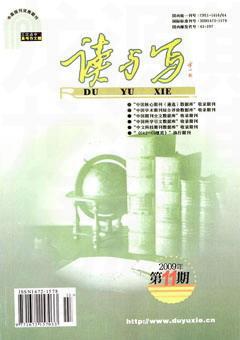Yan Fu’s Thoughts of Translation
韩赵东
Abstract: Yan Fu was famous translator in Chinese history, and proposed three standards of translation. The theory made great contribution to Chinese translation history. However, with the development of society at present, Yan Fu's theory had been out of date. More and more translators and scholars pay more attention on linguistics to translate appropriately nowadays. It is the aim to analysis this problem in the article and introduces more detailed knowledge to make flourish translation, so that it becomes true that Chinese translation develop step by step.
Key words: Yan Fu;"信达雅" theory;Linguistics
中图分类号: H315.9
文献标识码: A文章编号:1672-1578(2009)11-0003-01
1 Yan Fu and his translation theory
Yan Fu,was born in Fujian Province in 1853, and studied in the Naval Management School when he was fourteen years old. Yan Fu not only studied traditional lessons in Naval Management School, but also mastered English, Math, Physics and Chemistry, especially English. The experience enriched his thoughts about our country and made it easy to accept the western thought. During this period, Yan Fu was active and opens in various translation activities, and was named the first person of translation by others. Based on his translation practice and the theories put forward by Buddy translators in ancient times, he proposed three standards of translation, i.e, "信达雅". (Xin)means the translator should be faithful to the original works. (Da) means the translatorshould use the common and fluent language to make sure that his translation can be understood completely and easily by readers.(Ya) means the translator should keep the writer's stylewhen he translates the works. The theory was the direction of translation to the latter and developed our country's translation theories with great degree.
2The contribution and limitation of this translation theory
The theory is the most widespread guiding principle of translation in China for over a century.It is a fact that Yan Fu uses ancient characters to describe his thoughts in his translation works, and thinks it is the fittest character to translate foreign works. Because Yan Fu's target of translationis those famous government officials. As long as the elegant utterance is attractive to them, theycan read his works,so that they know what he thinks and what he wants to say. Therefore, YanFu's principle and its derivatives dominated him first half of 20th century Chinese translation history.Xie Tianzhen, in his excellent book Medio-Translatology, describe what happened next: Yan Fu's "faithfulness, understandability, and elegance" had such a deep influence that even today practically all textbooks and scholarly works on translation theory cannot escape its confineswhen talking about translation standards. This cannot but cause worry among scholars. However, the theory is limited in some degree. It is proposed in certain history background, there was obvious aim when Yan Fu translated works,and it is difficult to corporate the theory completely. With the development of translation, the theory is out of date.Wang Zuoliang in his book New Period's Translation View in 1987 said:" The theory is a such good summary that it is attractive for a long time. But if we still be content with the three characters until now, it illustrates that we just step in the original circle.
3 New translation theory in recent times
More and more scholars are now showing an interest in adopting linguistic approaches to translation studies. Between 1949 and 1989,an incomplete survey by the author revealed that there were only 30 textbook passages discussing the relationship between linguistics and translation,including aspects of general linguistics,pragmatics,stylistics,text linguistics, rhetoric and machine translation.From 1990 to 1994,there was an incredible increase in the number ofpassages looking at translation from a linguistic point of view.New terms such as discourse analysis, hermeneutics, dynamic equivalence, deep structure and surface structure, context, theme and rhyme, cooperative principles, appeared in the field of translation studies. These linguistics approaches shed new lights on the criteria of YanFu.Chinese scholars began to criticize the vagueness of these three criteria and endeavored to give them concrete significance through the theories of western linguistics. 4 Conclusion
Yan Fu is successful man as translator, and a key person in the history of bringing the western thoughts into China. His theory makes our country's translation theories get a new stage, and lasts for a long time. Linguistics is the trend of translation development in the future, we should explore more on it make sure that the works we translate keep the same thoughts and the same style but different language forms with the original works.
References:
[1]彭卓吾. 翻译学[M].北京图书馆出版社,2000.1.
[2]马祖毅.中国翻译简史[M].中国对外翻译出版公司,1998.6.
[3]谢天振.译介学[M].上海外语教育出版社,1999.2.
——以翻译《沉默的大多数》为例
- 读与写·教育教学版的其它文章
- A Tentative Study of Pynchon and His Works
- The Study of Three-paragraph Argumentative Writings under Scaffolding Theory
- Reflections on Elizabeth Bishop’s Poem-The Moose
- Discourse Power and Translator’s Style
- On Natural Speech’s Role in Chinese Students’ English Listening Comprehension
- On The Introduction of Cultural Awareness In College English Teaching

